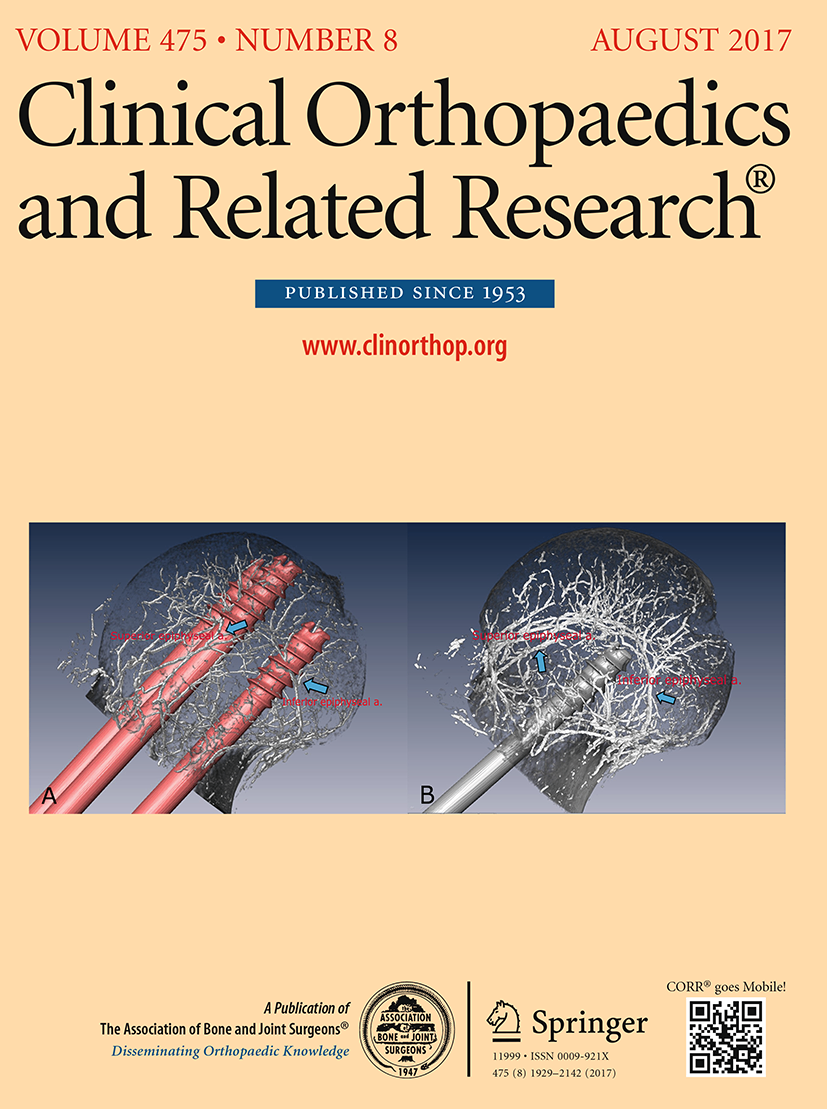
External rotation immobilization does not reduce recurrence rate for shoulder dislocation

External rotation immobilization does not reduce recurrence rate for shoulder dislocation
External rotation immobilization for primary shoulder dislocation: a randomized controlled trial
Clin Orthop Relat Res. 2014 Aug;472(8):2380-6. doi: 10.1007/s11999-013-3432-6.Synopsis
60 patients with a primary anterior glenohumeral dislocation were randomized to either immobilization in external rotation or internal rotation, following reduction. This study aimed to determine whether external immobilization reduced the frequency of recurrent instability as compared to internal immobilization. The results at the minimum 12 months' follow-up indicated that rates of recurrent dislocation, instability, and instability requiring surgical intervention were comparable between groups. Additionally, WOSI scores and ROM (between injured and contralateral side) were similar. Difference in ASES scores between groups achieved borderline significance in favour of external immobilization.
Was the allocation sequence adequately generated?
Was allocation adequately concealed?
Blinding Treatment Providers: Was knowledge of the allocated interventions adequately prevented?
Blinding Outcome Assessors: Was knowledge of the allocated interventions adequately prevented?
Blinding Patients: Was knowledge of the allocated interventions adequately prevented?
Was loss to follow-up (missing outcome data) infrequent?
Are reports of the study free of suggestion of selective outcome reporting?
Were outcomes objective, patient-important and assessed in a manner to limit bias (ie. duplicate assessors, Independent assessors)?
Was the sample size sufficiently large to assure a balance of prognosis and sufficiently large number of outcome events?
Was investigator expertise/experience with both treatment and control techniques likely the same (ie.were criteria for surgeon participation/expertise provided)?
Yes = 1
Uncertain = 0.5
Not Relevant = 0
No = 0
The Reporting Criteria Assessment evaluates the transparency with which authors report the methodological and trial characteristics of the trial within the publication. The assessment is divided into five categories which are presented below.
4/4
Randomization
4/4
Outcome Measurements
3/4
Inclusion / Exclusion
4/4
Therapy Description
4/4
Statistics
Detsky AS, Naylor CD, O'Rourke K, McGeer AJ, L'Abbé KA. J Clin Epidemiol. 1992;45:255-65
The Fragility Index is a tool that aids in the interpretation of significant findings, providing a measure of strength for a result. The Fragility Index represents the number of consecutive events that need to be added to a dichotomous outcome to make the finding no longer significant. A small number represents a weaker finding and a large number represents a stronger finding.
Why was this study needed now?
Dislocation of the shoulder is a common injury affecting the glenohumeral joint. In the young and active population, recurrent instability following conservative treatments for dislocated shoulders remains problematic. Patients are typically immobilized with a sling after reduction but the position in which the arm is immobilized is highly debated. Several studies have demonstrated that external rotation immobilization was efficacious in reducing rates of recurrence while contrasting results were indicated in a separate study with a larger population. Therefore, this study was aimed to compare recurrence rates and quality of life outcomes between external and internal immobilization.
What was the principal research question?
Does immobilization in external rotation reduce the frequency of recurrent instability and yield better disease-specific quality-of-life scores, when compared to immobilization in internal rotation, in patients with a primary anterior glenohumeral dislocation assessed at a minimum of 12 months?
What were the important findings?
- Rate of recurrent dislocation at the minimum 12 months' follow-up was 6/27 (or 22%) in the external group and 8/25 (or 32%) in the internal group. No significant difference was observed between groups (p=0.42).
- Rate of recurrent instability at the minimum 12 months' follow-up was also not significantly different between groups. Rates were 10/27 (or 37%) in the external group and 10/25 (or 40%) in the internal group (p=0.82).
- Rate of recurrent instability requiring surgical stabilization was 6/27 (or 22%) and 7/25 (28%) in the external and internal groups respectively. No significant between group difference was observed (p=0.63).
- ASES score activities of daily living at the minimum 12 months' follow-up favoured in the external group (95; SD 5), over the internal group (89; SD 14) (p=0.05).
- WOSI scores did not differ significantly between groups. Scores averaged 87% (SD 14) and 84% (SD 21) in the external and internal groups, respectively (p=0.74).
- ROM (injured side vs. contralateral side) averaged 70 vs. 76 degrees in the external group and 76 vs. 78 degrees in the internal group. This difference between groups did not reach statistical significance (p=0.15 vs. p=0.67).
- Compliance with brace or sling was similar between groups (Brace: 87% [27/31]; Sling: 83% [24/29])
What should I remember most?
Rate of recurrent dislocation, instability, and instability requiring surgical intervention at the minimum 12 months' follow-up did not differ significantly between internal and external rotation immobilization. WOSI scores and ROM were comparable, with ASES scores achieving borderline significance in favour of external immobilization.
How will this affect the care of my patients?
The results of this study indicated that immobilization in external rotation following reduction of a primary anterior glenohumeral dislocation did not reduce rates of recurrence as compared to the traditional protocol of immobilization in internal rotation. The small sample size and moderate loss to follow-up in this study, however, indicates a need for further studies.
Learn about our AI Driven
High Impact Search Feature
Our AI driven High Impact metric calculates the impact an article will have by considering both the publishing journal and the content of the article itself. Built using the latest advances in natural language processing, OE High Impact predicts an article’s future number of citations better than impact factor alone.
Continue



 LOGIN
LOGIN

Join the Conversation
Please Login or Join to leave comments.